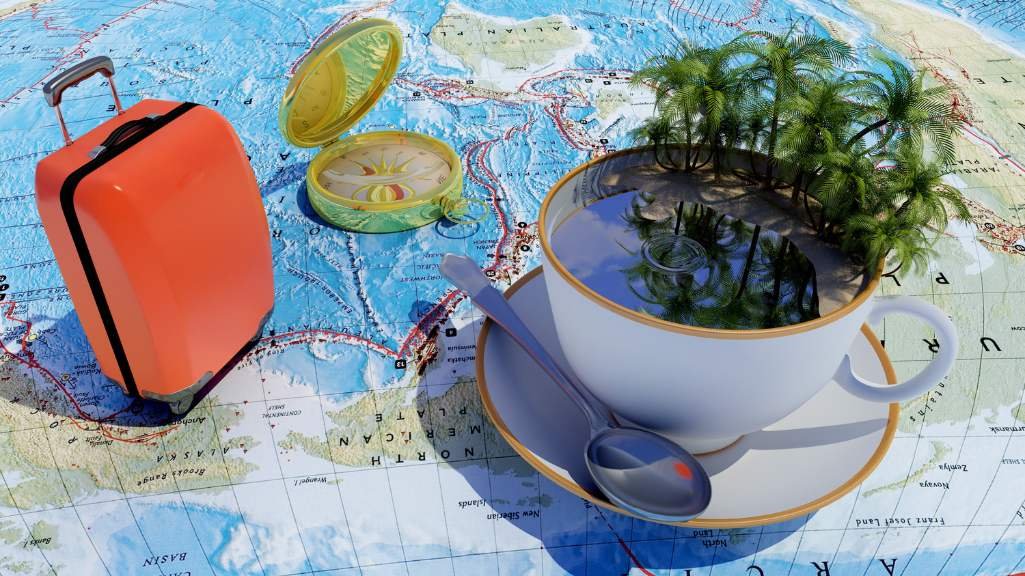Tourism's Impact: Pollution and Habitat Disruption
Alvish Asher
. 2 min read
Tourism can have a significant impact on the environment, leading to pollution and habitat disruption. The increased number of visitors can cause overcrowding and generate waste, which can pollute the air, water, and soil. Additionally, the construction of tourist facilities and infrastructure can result in the clearing of natural habitats, which can have a devastating impact on local ecosystems and wildlife. By integrating apps into the tourism experience, we can empower visitors to make informed choices and engage in sustainable behaviors, thereby minimizing the negative impacts of tourism on the environment and ensuring the long-term sustainability of tourist destinations.

Depletion of Natural Resources
Water Supply and Distribution
The high tourism season typically works against the natural water cycle of an area, and it does not take into account the possibility of years with insufficient rainfall, which is a problem that is becoming more prevalent as a result of climate change. The months of the year with the lowest precipitation levels are also the months in which the demand for water in resorts and other areas of special tourist interest is at its highest. People who go there with the expectation of having unrestricted access to an endless supply of clean water from local sources cause these places to become crowded.
Land Degradation
Tourism frequently results in the desecration of picturesque landscapes. Although many locations in today's world have limits and restrictions on what kinds of development can take place and in what styles, many of these locations do not have any such rules. The presence of high-rise hotels and other buildings that are out of character with the architecture and landscape of the surrounding area contributes to the area's dearth of atheistic appeal.
Weakening of Social and Cultural Norms
Visitors from other countries often bring with them a variety of social and cultural practices that are quite distinct from the norms typically followed by residents of the area. Tourism encourages interaction between locals as well as exposure to new experiences, new practices, a dynamic way of living, new traditions, and new historical contexts for those who live in the area. As a consequence of this, the people in some areas have been influenced to abandon their traditional practices, beliefs, norms, religion.
Trash is Left Behind by Visitors on Beaches
One of the most significant contributors to the contamination of beaches is tourism. Beach pollution is the presence of harmful substances on the coasts, such as waste, plastic, oils, and even pesticides. Some examples of beach pollution include trash and plastic. Guests are responsible for leaving behind a variety of trash, including plastic cups, glass bottles, and other items. In order to stop further pollution of our oceans, it is essential that we keep our waterways, rivers, and harbors free of plastic pollution. This is especially important.
Clearing of Land for Construction Purposes Involves Cutting Down Forests
There is a rise in the number of people looking for places to stay in popular tourist destinations. In order to meet this demand, resorts and hotels are frequently constructed by clear cutting nearby forests. This leads to deforestation, which in turn creates a number of risks for people and the environment. Cutting down trees can result in the elimination of animal habitats, which can have a devastating effect on the surrounding ecosystem. Trees are responsible for the release of oxygen and the absorption of greenhouse gases.
Conclusion
In conclusion, while tourism can provide economic benefits and cultural exchange, it also has the potential to cause significant negative impacts on the environment and local communities. The depletion of natural resources, land degradation, weakening of social and cultural norms, beach pollution, and deforestation are just a few of the consequences that can result from unregulated and unmanaged tourism. It is essential that steps are taken to manage tourism sustainably, to ensure that the benefits of tourism are enjoyed without causing harm to the environment and local communities.
More Stories from
Unveiling India's Volcanic Secrets: A Geological Overview
Explore India's unique volcanic history and the enduring forces of nature that continue to captivate scientists and adventurers alike.
Mitigating Earthquake Impact: Strategies for Resilient Communities
This article provides an insightful overview of earthquakes, their causes, and effective strategies for mitigating their impact.
Zero-Waste Living: Practical Tips for Reducing Environmental Impact
Discover the power of zero-waste living as this article offers practical tips and actionable advice for reducing your environmental impact.
Eco-Friendly Practices: How Individuals and Businesses Can Make a Difference
Discover the Power of Eco-Friendly Practices: Learn how individuals and businesses can contribute to a greener world by adopting sustainable measures.
Biotechnology and the Future of Medicine: Advancements and Ethical Concerns
This article explores precision medicine's personalized treatments, the promise and ethical challenges of gene editing, the potential of artificial intelligence in healthcare, and the future of organ transplantation.










.png?width=40&aspect_ratio=1:1)


.png?width=40&aspect_ratio=1:1)